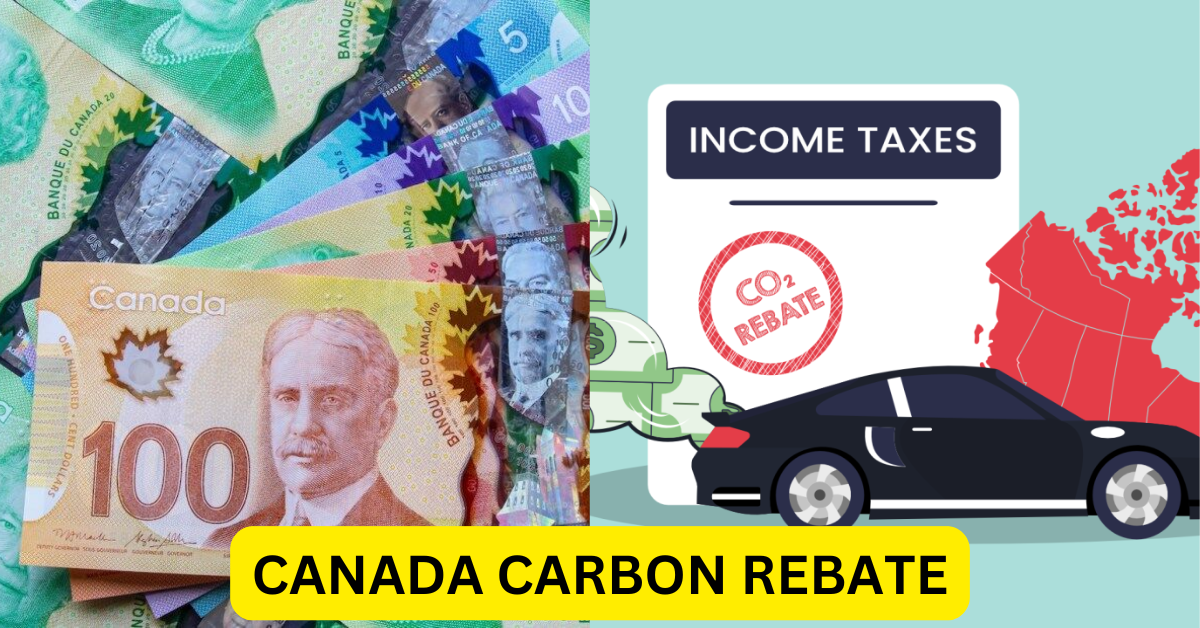Canada is set to distribute the first Canada Carbon Rebate (CCR) payment for 2025 on January 15, providing financial relief to eligible Canadians.
This initiative, previously known as the Climate Action Incentive Payment, applies to residents in eight provinces affected by the federal fuel charge: Alberta, Saskatchewan, Manitoba, Ontario, New Brunswick, Nova Scotia, Prince Edward Island, and Newfoundland and Labrador.
The CCR aims to offset the costs of carbon pollution pricing for households. Payments are made quarterly, either by direct deposit or cheque, and vary depending on household size, location, and eligibility for rural supplements.
Key Details About the Canada Carbon Rebate
Who is Eligible?
To qualify for the rebate:
- You must have filed an income tax return for the previous year, even if you had no income to report.
- Residents in provinces with the federal carbon pricing system can claim the rebate.
- Rural residents may receive an additional 20% top-up to account for higher energy needs and limited access to clean transportation.
Residents in provinces like British Columbia, Quebec, Yukon, and the Northwest Territories, which have their own carbon pricing systems, are not eligible for the federal rebate.
How Much Will You Receive?
The amount varies based on your province, household composition, and whether you qualify for the rural top-up. For a family of four in eligible provinces, here are estimated amounts for the 2024-2025 period:
- Ontario: $280 quarterly + 20% rural top-up
- Alberta: $450 quarterly + 20% rural top-up
- Manitoba: $300 quarterly + 20% rural top-up
- New Brunswick: $190 quarterly + 20% rural top-up
If you live in a rural area, ensure you check the appropriate box on your tax return to claim the additional supplement.
How to Receive the Payment
- File Your Tax Return: The rebate amount is determined based on your tax filings.
- Direct Deposit or Cheque: Payments are sent directly to your bank account if registered with the Canada Revenue Agency (CRA). Otherwise, a cheque will be mailed to you.
- Primary Claimant: If you have a spouse or common-law partner, the individual who files their tax return first will receive the rebate on behalf of the household, including any credits for children.
Why Is the Carbon Tax Important?
Canada’s carbon pricing system, introduced under the Greenhouse Gas Pollution Pricing Act, is designed to curb greenhouse gas emissions and help meet the country’s commitment to the Paris Agreement. The carbon tax has steadily increased since its introduction in 2019, starting at $20 per tonne and expected to reach $170 per tonne by 2030.
The tax revenue is returned directly to residents through the CCR, making the system “revenue-neutral.” This ensures that while households pay more for carbon-based products, they receive financial relief to offset these costs.
Impact on Rural Communities
The federal government recognizes that rural Canadians face unique challenges, such as higher energy consumption and fewer public transit options. To address this, a proposed amendment in Bill C-59 aims to double the rural top-up from 10% to 20%.
How to Maximize Your Rebate
- File Taxes Early: Ensure you meet the eligibility requirements and avoid delays.
- Register for Direct Deposit: Receive your payment faster and securely.
- Claim the Rural Supplement: If applicable, complete the necessary section on your tax return.
Conclusion
The Canada Carbon Rebate is a vital tool to help Canadians manage the rising costs associated with carbon pollution pricing.
By understanding the eligibility criteria, payment amounts, and how to apply, you can ensure you receive the full benefits. Stay informed and plan your finances accordingly to make the most of this program.
This article has been carefully fact-checked by our editorial team to ensure accuracy and eliminate any misleading information. We are committed to maintaining the highest standards of integrity in our content.
Filza specializes in simplifying financial topics for everyday readers. Whether breaking down Canada’s tax guides or U.S. benefits like SNAP and VA Disability, Filza’s relatable writing style ensures readers feel confident and informed. Follow her insights on LinkedIn or reach out via email at shewrites.health@gmail.com.
